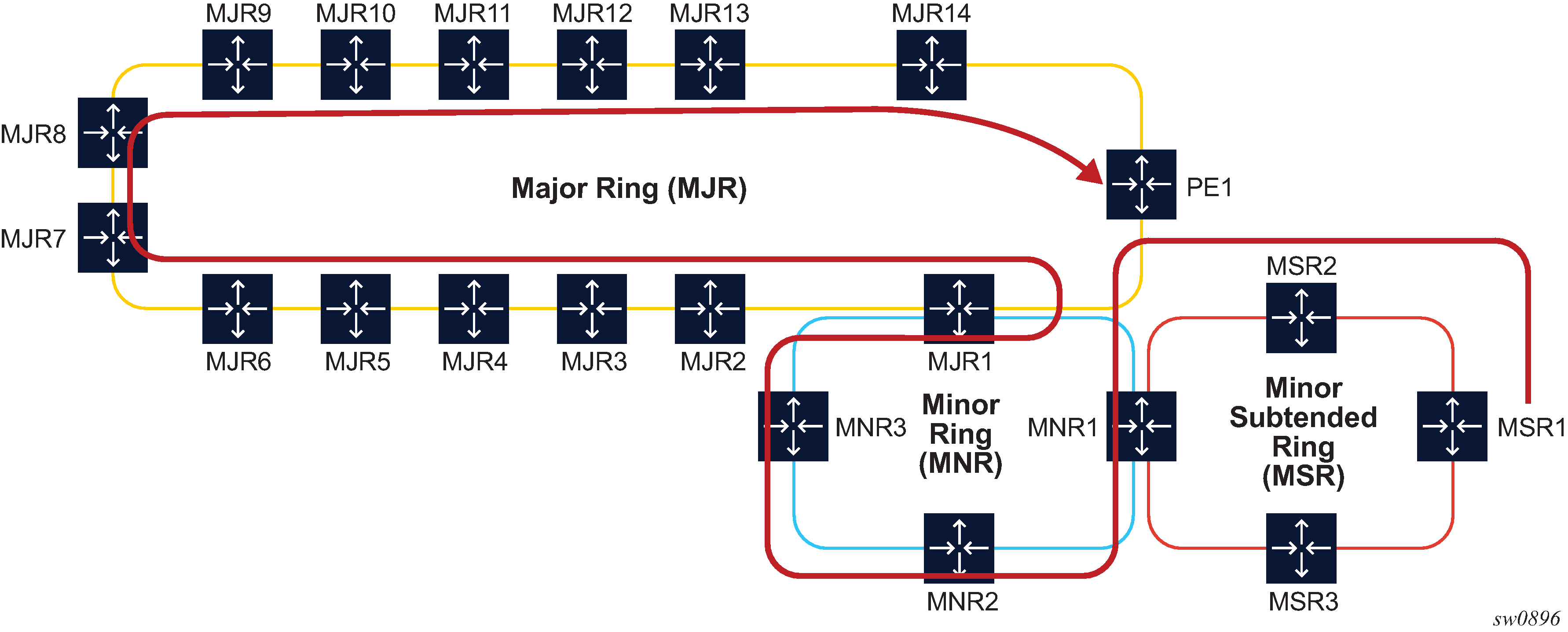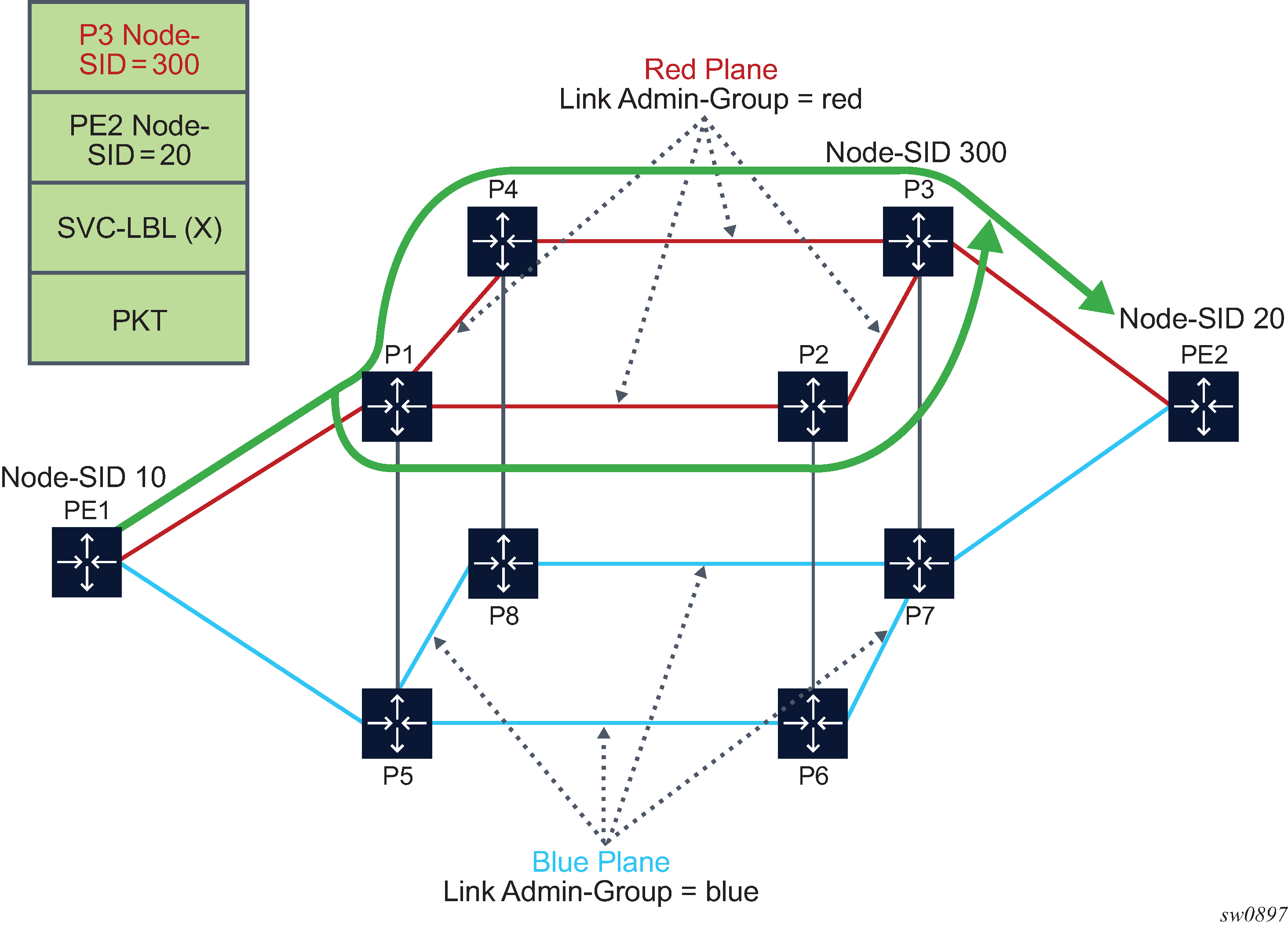Figure: Label stack reduction in a 3-tier ring topology illustrates a metro aggregation network with three levels of rings for aggregating regional traffic from edge ring routers into a PE router.

The path of the highlighted LSP uses admin groups to force the traffic eastwards or westwards over the 3-ring topologies such that it uses the longest path possible. Assume all links in a bottom-most ring1 have admin-group=east1 for the eastward direction and admin-group=west1 for the westward direction.
Similarly, links in middle ring2 have admin-group=east2 and admin-group=west2 and links in top-most ring3 have admin-group=east3 and admin-group=west3. To achieve the longest path shown, the LSP or path should have an include statement: include east1 west2 east3. The fully explicit path computed in Phase 1 of CSPF results in label stack of size 18.
The label stack reduction algorithm searches for the farthest node SID in that path which can replace a segment of the strict path while maintaining the stated admin-group constraints. The reduced label stack contains the SID adjacency MSR1-MSR2, the found node SIDs plus the node SID of the destination for a total of four labels to be pushed on the packet (the label for the adjacency MSR1-MSR2 is not pushed):
{N-SID MNR2, N-SID of MNR3, N-SID of MJR8, N-SID of PE1}
Figure: Label stack reduction in the presence of ECMP paths illustrates an example topology which creates two TE planes by applying a common admin group to all links of a plane. There are a total of four ECMP paths to reach PE2 from PE1, two within the red plane and two within the blue plane.

For a SR-TE LSP from PE1 to PE2 which includes the red admin-group as a constraint, Phase 1 of CSPF results in two fully explicit paths using adjacency SID of the red TE links:
path 1 = {PE1-P1, P1-P2, P2-P3, P3-PE2}
path 2 = {PE1-P1, P1-P4, P4-P3, P3-PE2}
Phase 2 of CSPF finds node SID of P3 as the farthest hop it can reach directly from PE1 while still satisfying the ‛include red’ admin-group constraint. If the node SID of PE2 is used as the only SID, then traffic would also be sent over the blue links.
Then, the reduced label stack is: {P3 Node-SID=300, PE2 Node-SID=20}.
The resulting SR-TE LSP path combines the two explicit paths out of Phase 1 into a single path with ECMP support.